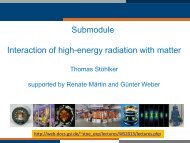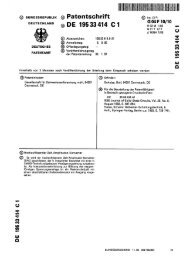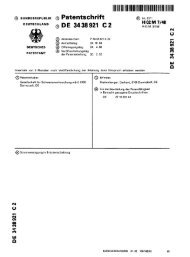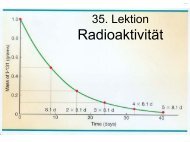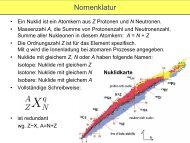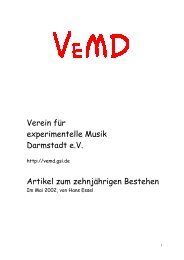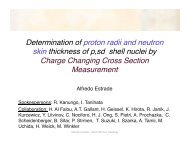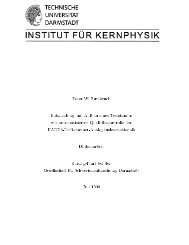doctoral thesis
doctoral thesis
doctoral thesis
You also want an ePaper? Increase the reach of your titles
YUMPU automatically turns print PDFs into web optimized ePapers that Google loves.
2 CHAPTER 1. INTRODUCTION<br />
+<br />
E0<br />
-<br />
-<br />
+<br />
E1>E0<br />
E2E0<br />
Figure 1.1: A schematic picture of an avalanche and the electric field deformations<br />
caused by the avalanche charge carriers. At the tip and the tail of the charge distribution<br />
the fields E1 and E3 are higher than the applied electric field E0. In the center of the<br />
charge distribution the field E2 is lower than E0. As a consequence, the value of the<br />
gas parameters like drift velocity and Townsend coefficient may vary with the position<br />
in the gas gap.<br />
avalanche charge would be up to seven orders of magnitude larger than the measured<br />
values. A very ’strong’ space charge effect is required to explain the small observed<br />
charges of around 1 pC [10] and doubts have been raised whether an avalanche can<br />
progress under such extreme conditions without developing into a streamer [9]. The<br />
space charge effect is shown schematically in Fig. 1.1. Some authors propose that<br />
other mechanisms like the extraction of surface electrons by the incident particle from<br />
the detector frame contribute to the detection efficiency of the device [8].<br />
Another disagreement concerns the shape of the charge spectra. While the statistics<br />
of avalanche multiplication predicts a shape following a power law, measurements<br />
show a peak that is becoming more pronounced with higher voltages. Many authors<br />
applied the so-called Polya distribution to the statistics of avalanche fluctuations in<br />
RPCs. This model assumes that the probability for the multiplication of electrons<br />
depends on the current size of the avalanche, which includes some kind of space charge<br />
effect in an incorrect way.<br />
In this <strong>thesis</strong> we discuss in detail the detector physics processes that are relevant for<br />
the operation of RPCs. We present Monte-Carlo simulation procedures that implement<br />
the described processes, from the primary ionization and the avalanche statistics to the<br />
induced signals and the front end electronics. A simple one dimensional simulation<br />
model without diffusion and space charge effects and results obtained with that model



